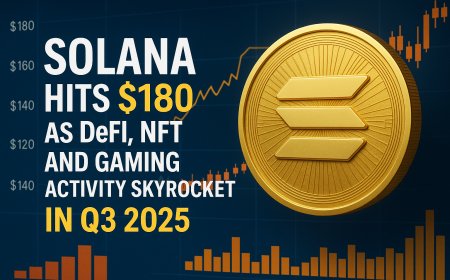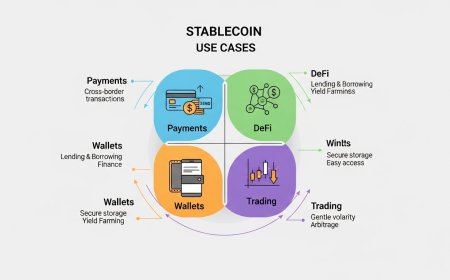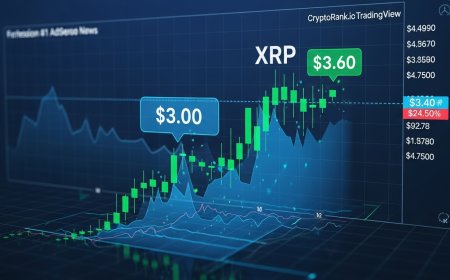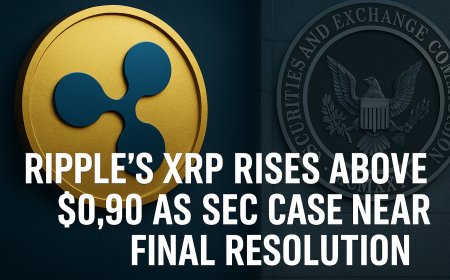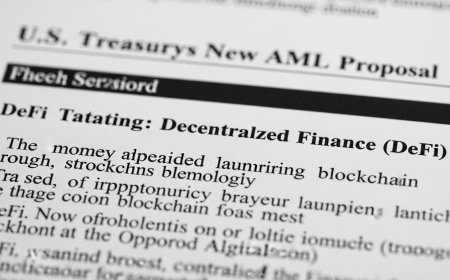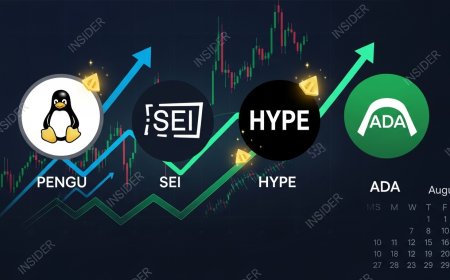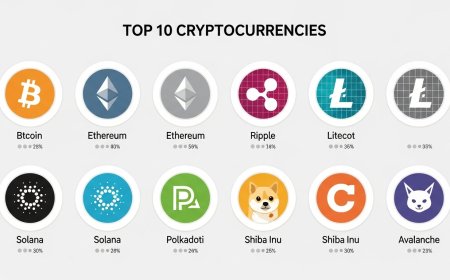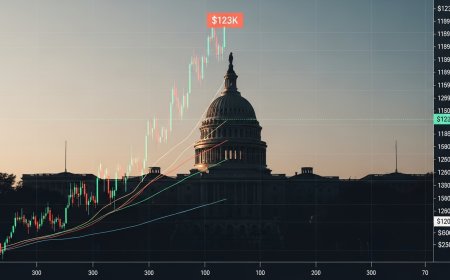Bitcoin Dominance Falls as Traders Rotate Into Altcoins
BTC dominance drops 1.5% while altcoin index hits a 3-month high. Ethereum and high-beta altcoins attract capital amid ETF-driven momentum.
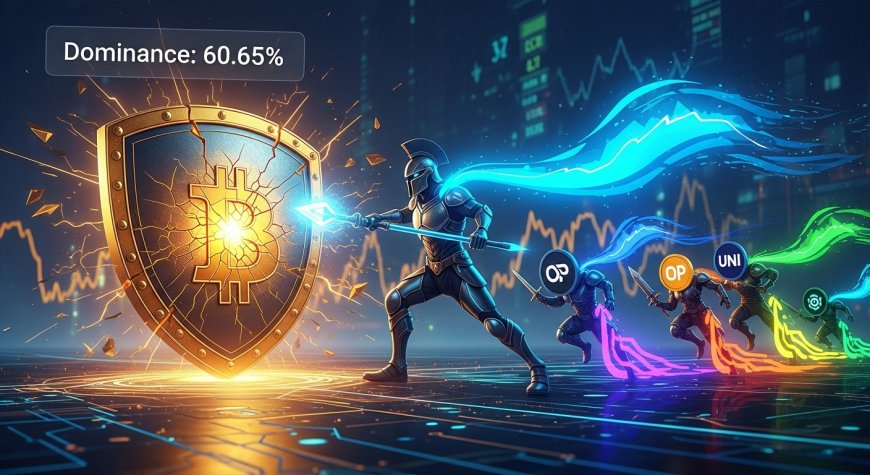
Bitcoin Dominance Falls as Traders Rotate Into Altcoins
A significant shift is occurring in the cryptocurrency market as Bitcoin's dominance has declined by 1.5% over the past week, coinciding with altcoins reaching a three-month performance high. This rotation of capital from Bitcoin into alternative cryptocurrencies represents a notable change in investor sentiment and market dynamics, suggesting a more mature and diversified approach to digital asset allocation.
Bitcoin Dominance Decline Signals Market Evolution
Bitcoin dominance, which measures Bitcoin's market capitalization as a percentage of the total cryptocurrency market, has dropped to 60.65%, its lowest level since early 2024. This decline indicates that investors are increasingly viewing alternative cryptocurrencies as viable investment options with unique value propositions beyond Bitcoin's role as digital gold.
The 1.5% drop in dominance may appear modest in percentage terms, but it represents billions of dollars in capital flowing from Bitcoin into altcoin markets. This capital rotation suggests that institutional and retail investors alike are becoming more sophisticated in their cryptocurrency allocation strategies.
Historically, periods of declining Bitcoin dominance have coincided with innovation cycles in the broader cryptocurrency ecosystem. As new technologies and applications emerge on alternative blockchain networks, investors recognize the potential for outsized returns in projects addressing specific market needs or technological challenges.
Ethereum Leads the Altcoin Rally
Ethereum has emerged as the primary beneficiary of the capital rotation away from Bitcoin, with ETH gaining significant ground against BTC over recent trading sessions. The world's second-largest cryptocurrency is attracting investment flows due to multiple positive catalysts, including successful ETF launches, Layer 2 ecosystem growth, and renewed DeFi activity.
The Ethereum network's versatility as a platform for decentralized applications, smart contracts, and financial protocols provides multiple avenues for value creation beyond simple price appreciation. This utility-driven approach resonates with investors seeking exposure to the practical applications of blockchain technology.
Institutional investors are particularly drawn to Ethereum's established ecosystem and developer community. The network's track record of continuous innovation and successful major upgrades has built confidence in its long-term viability as the foundation for decentralized finance and Web3 applications.
High-Beta Altcoins Capture Speculative Interest
Beyond Ethereum, high-beta altcoins are experiencing substantial interest from traders seeking amplified exposure to cryptocurrency market movements. These smaller-cap alternative cryptocurrencies often exhibit greater price volatility than Bitcoin and Ethereum, attracting both speculative trading capital and investors betting on breakthrough innovations.
Layer 2 scaling solutions, including Optimism (OP) and Arbitrum-based tokens, are benefiting from increased attention to Ethereum ecosystem scaling. These projects offer investors exposure to the growing demand for efficient and cost-effective blockchain transactions.
DeFi governance tokens, particularly those associated with established protocols like Uniswap (UNI), are also experiencing renewed investor interest. As decentralized finance continues to mature and attract institutional adoption, these tokens are being viewed as plays on the future of financial infrastructure.
ETF-Driven Momentum Creates New Investment Flows
The recent launch of Ethereum ETFs has created new institutional pathways for cryptocurrency investment, contributing significantly to the capital rotation dynamics currently reshaping the market. These regulated investment vehicles provide traditional finance with approved methods for gaining cryptocurrency exposure beyond Bitcoin.
Professional fund managers and financial advisors are increasingly recommending diversified cryptocurrency allocations rather than Bitcoin-only strategies. This institutional guidance is influencing both high-net-worth individuals and smaller retail investors to consider broader cryptocurrency exposure.
The ETF structure also enables more sophisticated investment strategies, including hedging and arbitrage opportunities that were previously difficult to execute in the cryptocurrency market. These advanced trading strategies are contributing to increased trading volumes and price discovery across altcoin markets.
Technical Analysis Supports Altcoin Strength
From a technical perspective, the rotation into altcoins is supported by improving chart patterns across multiple alternative cryptocurrencies. Many altcoins have broken out of long-term consolidation patterns, suggesting that the current momentum could be sustained over longer time horizons.
Bitcoin's relative strength index (RSI) has shown signs of overextension in recent weeks, while many altcoins maintain healthier technical indicators with room for additional upside movement. This divergence in technical conditions is encouraging traders to rotate capital toward alternative opportunities.
Volume analysis reveals that the current altcoin rally is supported by genuine buying interest rather than merely short covering or technical momentum. This fundamental demand suggests that the capital rotation could continue as long as altcoin fundamentals remain strong.
Market Structure Changes and Liquidity Flows
The cryptocurrency market structure is evolving to accommodate increased altcoin trading activity. Major exchanges are expanding their altcoin offerings and improving trading infrastructure to handle increased volumes in alternative cryptocurrency markets.
Institutional trading desks are also adapting their strategies to capture opportunities across the broader cryptocurrency spectrum. This professional participation is contributing to improved price discovery and reduced volatility in altcoin markets, making them more attractive to conservative institutional investors.
Decentralized exchange (DEX) volumes are experiencing significant growth as traders seek access to newer altcoin projects not yet listed on centralized platforms. This grassroots trading activity is contributing to the overall capital rotation away from established cryptocurrencies like Bitcoin.
Risk Management Considerations
While the rotation into altcoins presents significant opportunities, it also introduces additional risk factors that investors must carefully consider. Alternative cryptocurrencies generally exhibit higher volatility than Bitcoin, requiring more sophisticated risk management strategies.
Regulatory uncertainty continues to affect different altcoin categories unevenly. Projects focused on privacy, gaming, or financial services may face varying levels of regulatory scrutiny across different jurisdictions, impacting their long-term viability and investment attractiveness.
Market correlation during stress periods remains a concern, as altcoins typically experience amplified downside during broad cryptocurrency market corrections. Investors rotating from Bitcoin to altcoins should maintain appropriate position sizing and risk management protocols.
Global Adoption and Innovation Drivers
The capital rotation into altcoins is being supported by genuine innovation and adoption across alternative blockchain networks. Projects offering solutions for specific industries, improved scalability, or enhanced user experiences are attracting both development talent and investment capital.
International regulatory developments are also influencing altcoin adoption patterns. Jurisdictions providing clear regulatory frameworks for alternative cryptocurrencies are seeing increased project development and investment activity, contributing to the overall altcoin momentum.
Corporate adoption of blockchain technology beyond Bitcoin is creating new demand sources for specialized altcoin projects. Companies implementing supply chain solutions, identity management systems, or decentralized finance tools are driving practical demand for alternative cryptocurrencies.
Future Market Implications
The current rotation from Bitcoin dominance toward altcoin diversification suggests a maturing cryptocurrency market where investors are making more nuanced investment decisions based on specific project fundamentals and technological capabilities.
This trend could accelerate mainstream adoption of cryptocurrency technology by demonstrating practical applications beyond simple value storage. As altcoins prove their utility in real-world applications, they contribute to the overall legitimacy and acceptance of digital assets.
For the broader cryptocurrency ecosystem, reduced Bitcoin dominance indicates healthy market development where innovation is distributed across multiple blockchain platforms rather than concentrated in a single network.
The ongoing capital rotation represents both opportunity and evolution in the cryptocurrency market. As traders and investors become more sophisticated in their approach to digital assets, the market is likely to see continued diversification and specialization across different cryptocurrency categories and use cases.
What's Your Reaction?
 Like
0
Like
0
 Dislike
0
Dislike
0
 Love
0
Love
0
 Funny
0
Funny
0
 Angry
0
Angry
0
 Sad
0
Sad
0
 Wow
0
Wow
0














